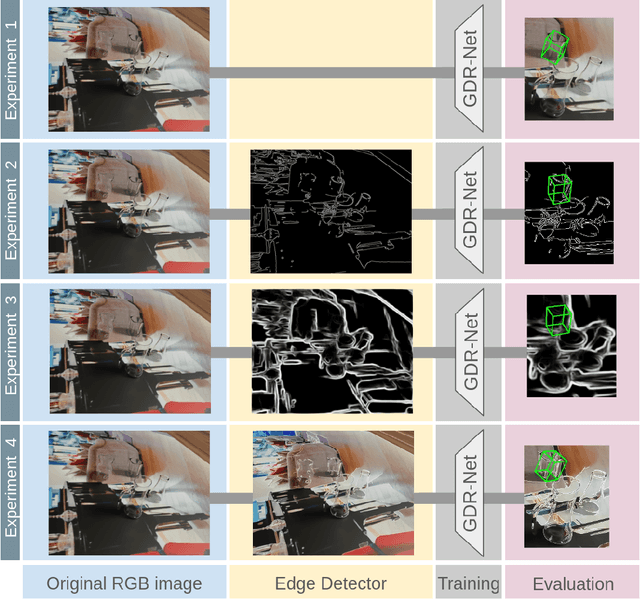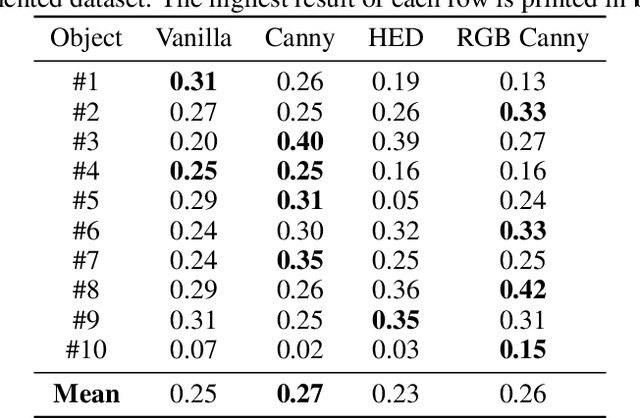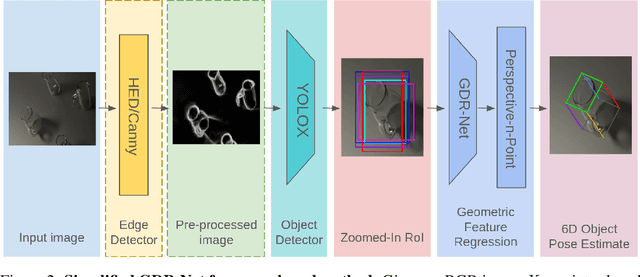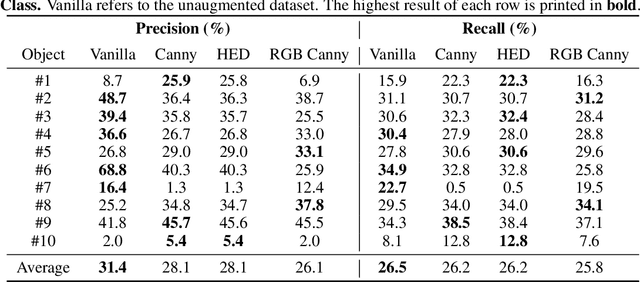Tessa Pulli
Multi-Modal 3D Mesh Reconstruction from Images and Text
Mar 10, 2025Abstract:6D object pose estimation for unseen objects is essential in robotics but traditionally relies on trained models that require large datasets, high computational costs, and struggle to generalize. Zero-shot approaches eliminate the need for training but depend on pre-existing 3D object models, which are often impractical to obtain. To address this, we propose a language-guided few-shot 3D reconstruction method, reconstructing a 3D mesh from few input images. In the proposed pipeline, receives a set of input images and a language query. A combination of GroundingDINO and Segment Anything Model outputs segmented masks from which a sparse point cloud is reconstructed with VGGSfM. Subsequently, the mesh is reconstructed with the Gaussian Splatting method SuGAR. In a final cleaning step, artifacts are removed, resulting in the final 3D mesh of the queried object. We evaluate the method in terms of accuracy and quality of the geometry and texture. Furthermore, we study the impact of imaging conditions such as viewing angle, number of input images, and image overlap on 3D object reconstruction quality, efficiency, and computational scalability.
Enhancing Transparent Object Pose Estimation: A Fusion of GDR-Net and Edge Detection
Feb 17, 2025



Abstract:Object pose estimation of transparent objects remains a challenging task in the field of robot vision due to the immense influence of lighting, background, and reflections. However, the edges of clear objects have the highest contrast, which leads to stable and prominent features. We propose a novel approach by incorporating edge detection in a pre-processing step for the tasks of object detection and object pose estimation. We conducted experiments to investigate the effect of edge detectors on transparent objects. We examine the performance of the state-of-the-art 6D object pose estimation pipeline GDR-Net and the object detector YOLOX when applying different edge detectors as pre-processing steps (i.e., Canny edge detection with and without color information, and holistically-nested edges (HED)). We evaluate the physically-based rendered dataset Trans6D-32 K of transparent objects with parameters proposed by the BOP Challenge. Our results indicate that applying edge detection as a pre-processing enhances performance for certain objects.
* accepted at First Austrian Symposium on AI, Robotics, and Vision (AIROV 2024)
From Words to Poses: Enhancing Novel Object Pose Estimation with Vision Language Models
Sep 09, 2024

Abstract:Robots are increasingly envisioned to interact in real-world scenarios, where they must continuously adapt to new situations. To detect and grasp novel objects, zero-shot pose estimators determine poses without prior knowledge. Recently, vision language models (VLMs) have shown considerable advances in robotics applications by establishing an understanding between language input and image input. In our work, we take advantage of VLMs zero-shot capabilities and translate this ability to 6D object pose estimation. We propose a novel framework for promptable zero-shot 6D object pose estimation using language embeddings. The idea is to derive a coarse location of an object based on the relevancy map of a language-embedded NeRF reconstruction and to compute the pose estimate with a point cloud registration method. Additionally, we provide an analysis of LERF's suitability for open-set object pose estimation. We examine hyperparameters, such as activation thresholds for relevancy maps and investigate the zero-shot capabilities on an instance- and category-level. Furthermore, we plan to conduct robotic grasping experiments in a real-world setting.
 Add to Chrome
Add to Chrome Add to Firefox
Add to Firefox Add to Edge
Add to Edge